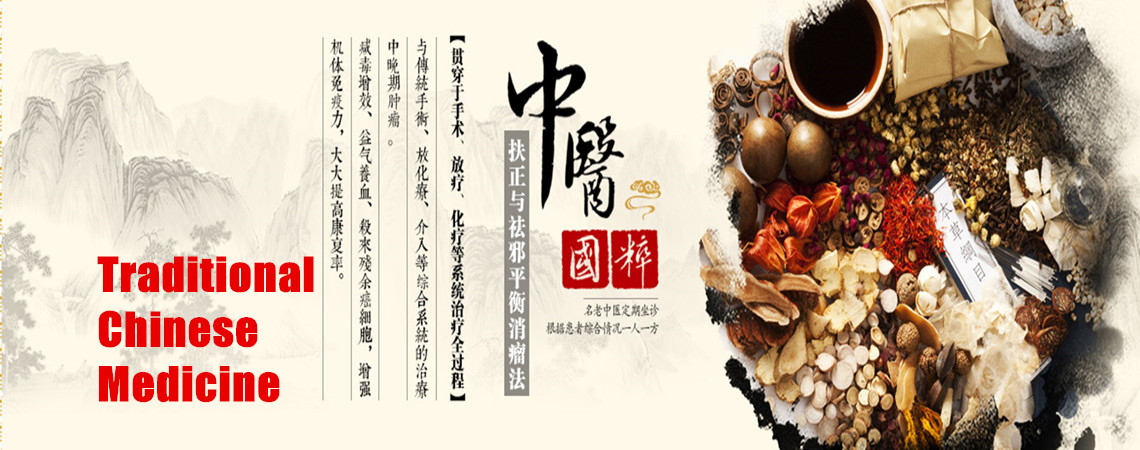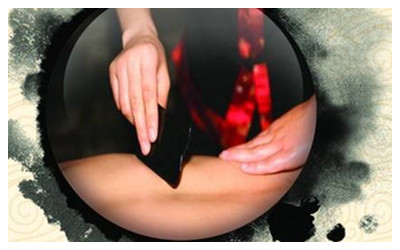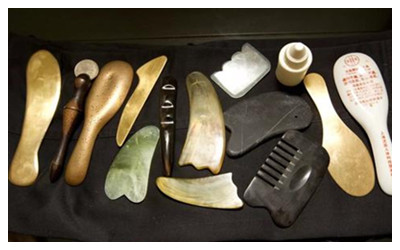Skype: neodalle-travel
Tel: +86 135 7447 2266
E-mail: sales@visitaroundchina.com

Scraping Therapy, known as "Gua sha" (Chinese: 刮痧), is a traditional Chinese medical treatment in which the skin is scraped to produce light petechiae. Practitioners believe that gua sha releases unhealthy bodily matter from blood stasis within sore, tired, stiff or injured muscle areas to stimulate new oxygenated blood flow to the areas, thus promoting metabolic cell repair, regeneration, healing and recovery. Gua sha is sometimes referred to as "scraping", "spooning" or "coining" by English speakers. The treatment has also been called the descriptive French name, tribo-effleurage.
 Gua sha should not be confused with ZhenBian ( 针砭) which looks similar but is a different procedure..Gua sha was transferred to Vietnam from China as cạo gió, and is very popular in Vietnam. This term translates roughly "to scrape wind," as in Vietnamese culture "catching a cold" or fever is often referred to as trúng gió, "to catch wind." The origin of this term is the Shang Han Lun, a c. 220 CE Chinese Medical text on cold induced disease--like most Asian countries, China's medical sciences was a profound influence in Vietnam, especially between the 5th and 7th Centuries CE. Cạo gió is an extremely common remedy in Vietnam and for expatriate Vietnamese.
Gua sha should not be confused with ZhenBian ( 针砭) which looks similar but is a different procedure..Gua sha was transferred to Vietnam from China as cạo gió, and is very popular in Vietnam. This term translates roughly "to scrape wind," as in Vietnamese culture "catching a cold" or fever is often referred to as trúng gió, "to catch wind." The origin of this term is the Shang Han Lun, a c. 220 CE Chinese Medical text on cold induced disease--like most Asian countries, China's medical sciences was a profound influence in Vietnam, especially between the 5th and 7th Centuries CE. Cạo gió is an extremely common remedy in Vietnam and for expatriate Vietnamese.
Gua sha is also used in Indonesia; in Java it is known as kerikan (lit., "scraping technique") or kerokan, and is very widely used--as a form of folk medicine--upon members of individual households.
Gua sha involves repeated pressed strokes over lubricated skin with a smooth edged and blunt instrument. Skin is typically lubricated with massage oil or balm, and commonly a ceramic Chinese soup spoon was used, or a blunt well worn coin, even honed animal bones, water buffalo horn, or jade, or even a simple metal cap with a blunt rounded edge is used.
 In cases of fatigue from heavy manual labor work, a piece of ginger root soaked in rice wine is sometimes used to rub down the spine from top to bottom.
In cases of fatigue from heavy manual labor work, a piece of ginger root soaked in rice wine is sometimes used to rub down the spine from top to bottom.
The smooth edge is placed against the oiled skin surface, pressed down firmly, and then moved down the muscles—hence the term tribo-effleurage (i.e., friction-stroking)—or along the pathway of the acupuncture meridians, along the surface of the skin, with each stroke being about 4–6 inches long.
Practitioners tend to follow the tradition they were taught to obtain sha: typically using either gua sha or fire cupping. The techniques are sometimes used together. In China, both gua shaand fire cupping are widely available from institutions ranging from national and public hospitals to private massage shops. Due to local peoples' deep trust in Traditional Chinese medicine and the treatments' reasonable price, both are very popular.
 Ask Questions ?
Ask Questions ?